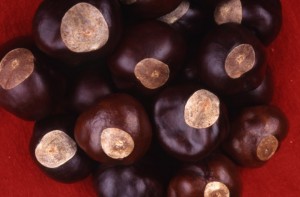 Why is our University mascot a poisonous nut? It starts with the nickname for Ohioans in general, obviously:
Why is our University mascot a poisonous nut? It starts with the nickname for Ohioans in general, obviously:
In the late 1700s, the first court in the then-Northwest Territory was opened near Marietta by Colonel Ebenezer Sproat. A tall man, usually dressed in military uniform and carrying a sword, he apparently impressed the local Native Americans so much that they started calling him “Hetuch,” which translates to “eye of the buck” or “Big Buckeye.” Buckeyes were also associated with Ohio since the first migration to the state, since the trees’ soft wood made it easier for early pioneers to clear land for farming, and fashion such items as bowls and walking sticks.
When William Henry Harrison, a former U.S. Senator of Ohio, was running for President, his campaign featured walking sticks and other carved pieces made of Buckeye wood. Even before the campaign, some members of Congress apparently referred to him as a “Buckeye” as a sign of affection.
By 1930, there was debate over whether the “Buckeye” should be the University mascot. That year, members of the Student Senate debated over the choice: Edwin Schoenleb of Marysville, stated, “the name ‘Buckeye’ does not indicate aggressiveness.” Alternative choices included sheep, goats, lions, tigers and bears. Ultimately, however Senate members decided on the poisonous nut; it is distinctive, they argued.
In 1950 famous cartoonist and alumnus Milt Caniff drew several designs to be used by the Department of Athletics for logos and uniform details featuring buckeyes and buckeye leaves. Ohio State finally got an actual “Buckeye” mascot when Ray Bourhis and Sally Lanyon created the now-ubiquitous Brutus Buckeye, who made his first appearance at a football game on October 30, 1965.
Filed by C.N.




Recent Comments